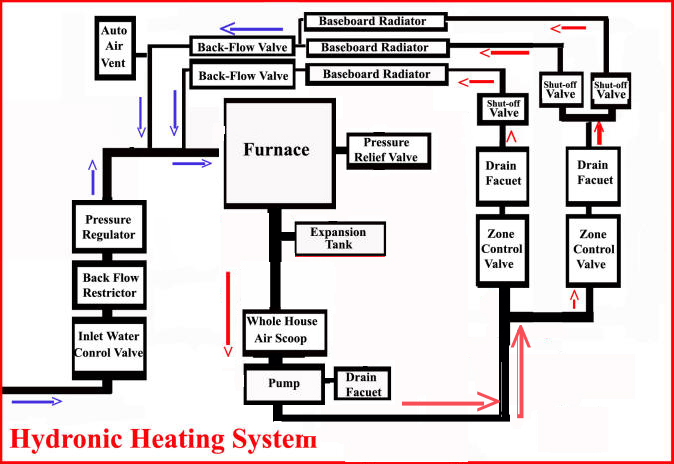
Shared Knowledge
"Hydronic Heating System - How to Fill an Empty System"
8 November 2010
Background:
In all likelihood, you will never have to fill or pay to have filled an empty hydronic heating system. In my case, home renovations, twice, resulted in baseboard radiators being replaced or moved that cause my system to be emptied of water and refilled.
How to fill an empty system:
Filling an empty hydronic heating system is not difficult but does take time, depending on the complexity of the system (number of zones and zone loops). And filling a system of water is only half the battle because water fill puts air into the system that has to be taken out for silent, efficient hydronic heating system operation.
In normal operation, water returns from all zones and zone loops at the furnace and is collected in a single pipe that then goes to the circulator pump, through the furnace and then out through zone control valves to the radiators in various rooms.

In a system fill operation, water flow is reversed such that house water is sent up the return lines, through radiators and back to the furnace. This method is used as one loop of a zone can be filled at a time and the circulator pump is not needed to move any water.
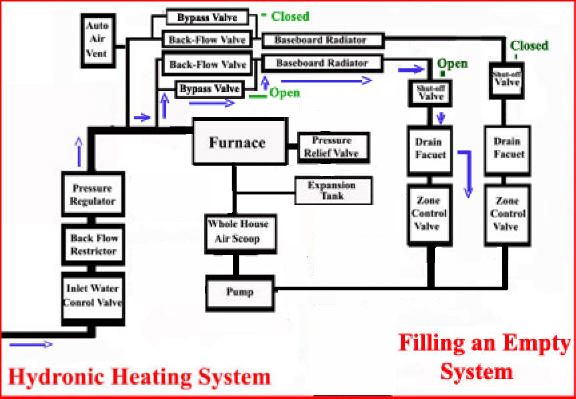
1. Make sure power is off to the system, either by throwing the breaker in the circuit box to off or placing the switch at the furnace in the "off" position.
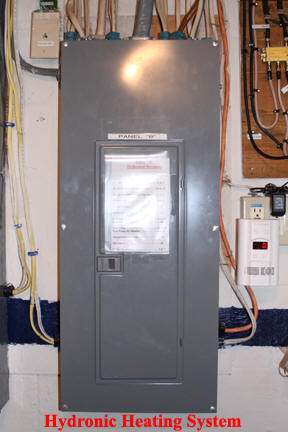
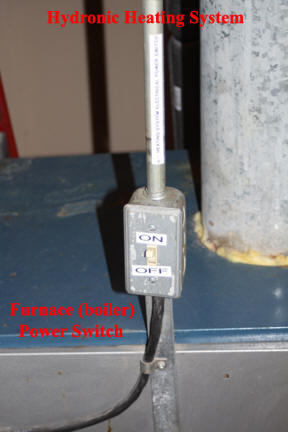
2. Open all return line back flow restrictor, bypass valves. In normal system operation, a check valve or back flow restrictor valve in each zone return line keeps inlet water from flowing from the furnace back up a zone return line. But in a system fill operation, we want water to flow away from the furnace via the zone return lines and thus the bypass valves around each back flow restrictor valve must be opened.
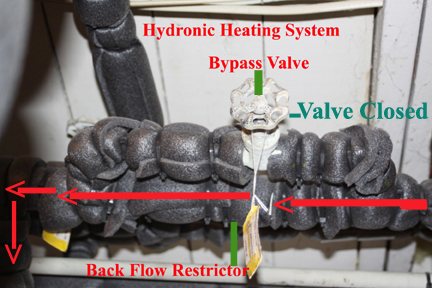
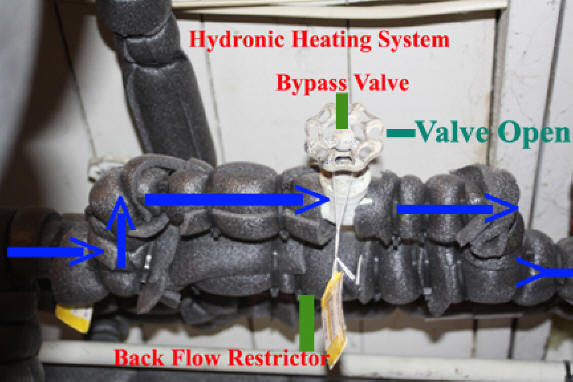
3. Attach a garden hose and route hose end to suitable drain or position a bucket on the first zone loop drain faucet.
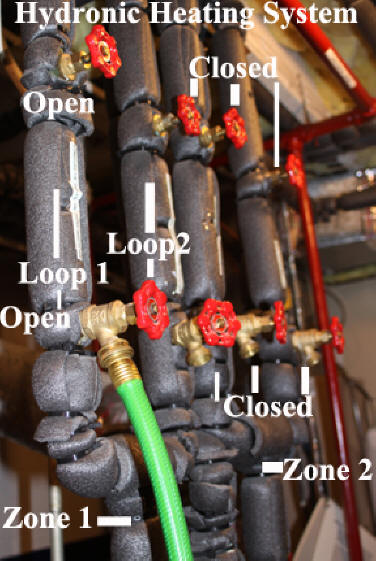
4. Open the house inlet water control valve, allowing water to flow through the water pressure valve into the hydronic heating system.
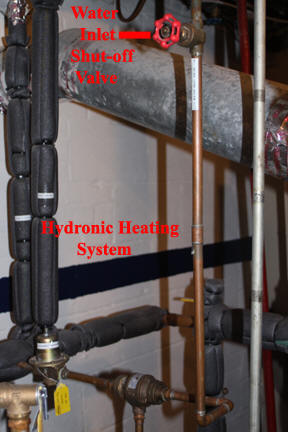
5. Water will now flow from the water inlet (street water or well) up the return line of the first zone loop, through the radiators and finally back down to the open drain faucet. Once you let water flow through the zone loop for a few minutes, slowly close off the zone loop drain faucet. You should continue to hear water enter the system as it takes the zone loop up to the pressure set in the inlet water zone pressure valve.
6. Now move your garden hose to the second loop of zone one and slowly open the drain faucet of the second loop. Once again, water will flow from the water inlet pressure valve up the return line for zone 1, loop2, through the radiators and back to the open drain faucet of zone 1, loop 2. Wait for several minutes until you have a nice flow out the garden hose and then slowly close the drain faucet.
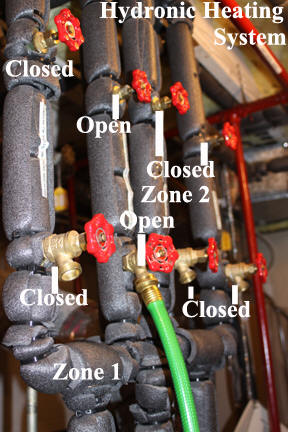
7. If you have additional loops on zone 1, move your garden hose to the drain faucet of the next loop and repeat the process defined above. Once you have filled all zone 1 loops, move your garden hose to the first loop of your zone 2. Once again, slowly open the drain faucet on loop 1 of zone 2 and let the water inlet valve fill the loop.
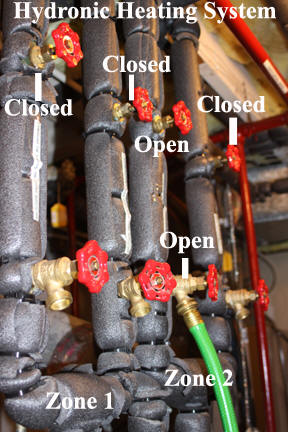
8. With the first loop of your second zone filled, move the garden hose to the next loop of zone 2 and repeat the process above.
9. Continue to fill your system one zone loop at a time until all have been filled.
10. Now your system might be filled but there is air in it you are going to have to get out. See section on getting the air out.
Click here for more home hydronic heating system.